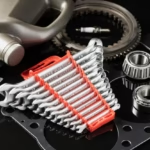Now Reading: How Do You Take Care of a DTF Printer?
-
01
How Do You Take Care of a DTF Printer?
How Do You Take Care of a DTF Printer?
Proper DTF (Direct-to-Film) printer servicing is a prerequisite for ensuring the printer’s life and functionality. Failure to adhere to daily and periodic care practices will cause problems such as clogged print heads, ink feed being insufficient and therefore loss of print quality. It is recommended to depict a maintenance schedule which will improve the user’s printing skills while reducing unnecessary blackouts of the printer. If well maintained, a DTF printer should be able to produce spotless and clear cuts without any discoloration.
Daily Care Routine
There are a number of activities one should undertake to assist with the performance of their DTF printer. To begin with, check the amount of ink in the cartridges during each printed job to know whether or not printing can be done. This is essential because low levels of ink will not only bring about poor colors, but will also damage the print heads. A number of tasks should be performed after use, notably cleaning the print heads after every use as a preventive measure against clogs of the heads which would interfere with the flow of ink. This can be done by use of a built in printing head cleaner or moist cloth bearing suitable cleaning chemicals. It’s also recommended to observe the correct power-off operations in order to prevent sudden blackouts which could result in faults. Shutting down of any printing machine which is faulty enables the internal elements to be shielded away and prolongs the life of the machine.
Weekly and Monthly Maintenance
Along with daily care activities, it is important to follow a weekly and monthly maintenance schedule for deeper cleaning and better checks. Do a thorough cleaning of the print heads and the capping station to get rid of any dried ink and dirt that may have built up. Look into the ink delivery system for blockages and leaks and ensuring all working parts are in order. It is also important to attend to the wear of some parts, such as wiper blades and dampers since they are critical to normal function. Regular maintenance does not only improve the quality of prints but also prevents breakdowns thus saving time and costs.
Environmental Factors
Environmental factors are also important in the maintenance of the DTF printers. Therefore, it is best to position the printer in the area where temperature and humidity do not fluctuate too much – usually recommended range is 60 – 80 degrees Fahrenheit (15 – 27 degrees Celsius) and humidity of 40 to 60 percent. The performance of the inks as well as the performance of the printer can be compromised by extreme hot or cold temperatures, or humidity that is unusually high or low. Furthermore, avoid dust accumulation in and around the printer by housekeeping the workstation regularly as well as making sure that the printer is covered when it is not in use. Dust has the potential to disrupt internal parts of the printer causing damage and therefore, affecting the quality of prints.
Conclusion
To sum it up, the maintenance of a DTF printer requires a mix of daily, weekly, and monthly maintenance activities. The most important include monitoring ink quantities, servicing print-heads, deep cleaning, and providing the printer with a suitable environment. If these routines are followed, it will be possible to dramatically improve the longevity of the DTF printer and maintain the quality of prints. Improved care, enhances working as well as secures your investment allowing you to create magnificent prints without worrying yourself.


































